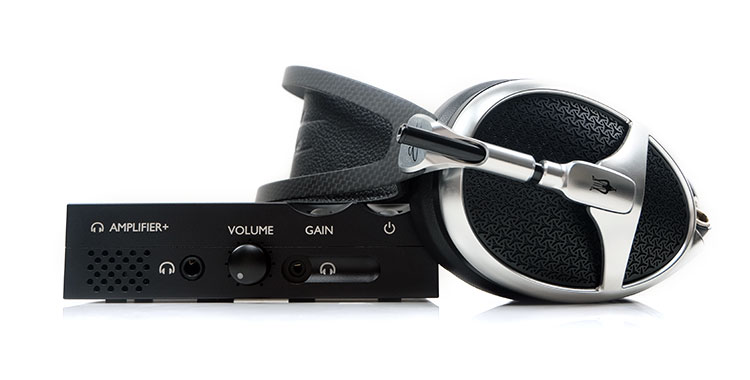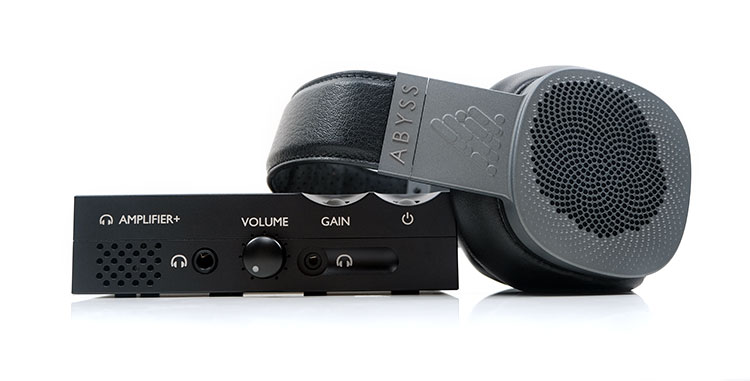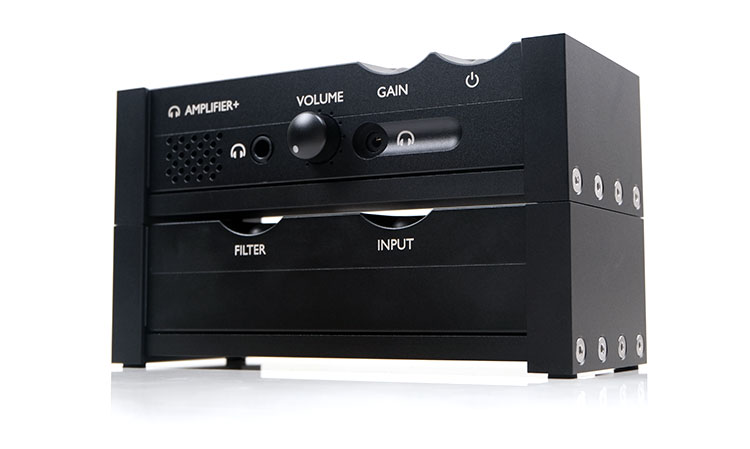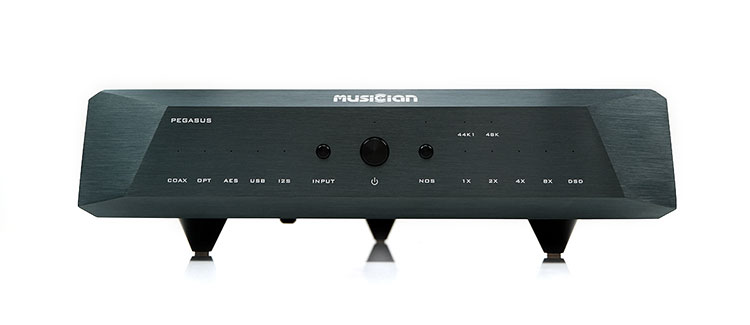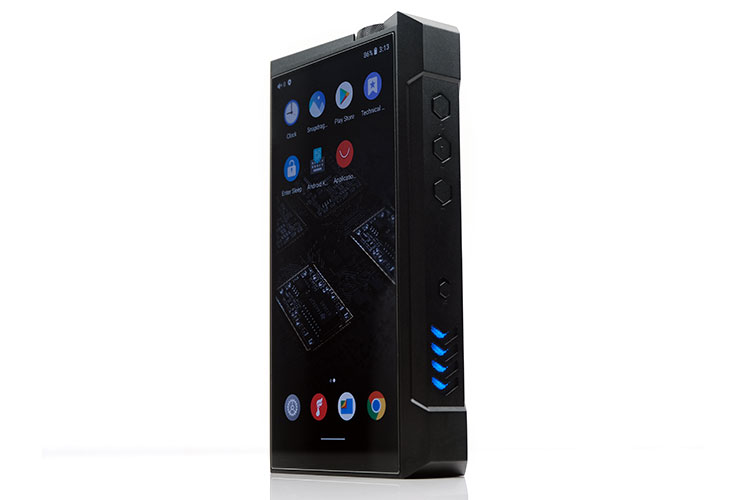Sound Impressions
Our sound impressions were completed using the Chord Electronics Qutest as our main source and a mix of headphones including the Final D8000 Pro, Meze Audio Elite, and the Abyss Headphones Diana TC.
Summary
The Anni performance is a very different experience from the like of the Hugo 2. It is big and bold sounding, yet smooth and very listenable at the same time.
This is less of a reference machine, not so focused on midrange par excellence with every micro-detail on display. Instead, the Anni reaches for the weight and power button sounding quite emotive at times in its surprisingly smooth-sounding presentation.
At this early stage, I do want to clarify that the dynamic range and level of clarity are excellent. You will not find anything really missing when connected to a quality source. Rather the tuning this time is less linear or neutral and more ‘joyful’.
For me, that is what will grab your attention first and foremost. The drive and energy from this amp make music fun and engaging sounding with plenty of PRaT, which is what it is all about right?
What I like about the Anni sound signature the most though is that this lively character does not come with a bucket load of forced treble and sparkle. The extension is good but it is not a dry or bright mix so you will not get a tonal quality that is heavy on ‘excitable’ contrast to tease out the detail.
That type of exaggerated coloration can easily tip over into a sharp overtone and quickly fatigue with headphones such as the D8000 Pro and the Diana TC. With both of these headphones, the Anni is quite natural sounding to my ear with the energy really residing more from the low-end to the mids.
Coloration
Anni’s timbre has an excellent lower harmonic order sounding meaty and satisfying and just perfect for modern pop and rock.
The fundamental shines with most headphones, most notably the Elite but actually, even though I think the Diana TC could do with a bit more power, it does a decent job digging out a good bass line here also.
That fundamental is complemented by a very smooth delivery through the mids. Despite the treble being more neutral to slightly relaxed, you can actually tease out some very pleasing clarity when paired with the Qutest.
The Qutest has this little treble uptick and in part is also responsible for that snappy bass response from the Anni. Other DACs such as the R2R Musician Audio Pegasus pulled back a bit on the slam instead delivery a little more organic warmth into the Anni mids.
Vocals are also very natural sounding with a slightly liquid leading edge giving it a very smooth but clear sounding quality. Along with the driven bass, the inviting nature of the vocal timbre comes a close second in the Anni presentation.
Percussion is also fairly natural-sounding through comparatively softer in its attack compared to cleaner more neutral-sounding amplifiers such as the Broadway and the ORR. They will rarely if ever sound splashy or overworked with unnatural sibilance kept in check.
Staging & Dynamics
The Anni staging is stronger on the low-end with impressive weight and a good center focus for vocals. Dynamic range is excellent also with medium efficiency planar and dynamic driver headphones.
However, what you might notice when comparing to more neutral high-end amps such as the Ferrum OOR is the complexity of the soundstage and imaging in general which I find a little less separated in terms of instrumental placement.
It is more noticeable also when compared to the Hugo 2 which, though flatter on the low-end, is more open and spacious sounding through the mids and highs offering better width and a more holographic presentation.
Overall, the staging is not narrow by any means but bass and vocals are more to the fore. It is entirely convincing with rumbling synthwave and EDM-orientated modern R’n’B where mixes are more on the spartan side with regard to instrumental complexity.
Synergy
Sensitivity
The Anni can handle IEMs but it is not a match made in heaven despite offering an SE 3.5mm TRS output. This is mainly down to the default volume level at zero being a shade too high in gain.
Therefore, if you plan on pairing it with IEMs I would point you to less efficient creations such as the Vision Ears Elysium which was the only one out of the 4 we tried that could offer a completely black background when the volume was at zero.
Other monitors such as the VE Phonix, EE’s Odin, and the more sensitive Andromeda 2020 could all pick up an audible level of music when the volume was at zero and had a higher degree of channel imbalance at very low volumes.
The Elysium was dead quiet on the other hand and had less of a channel imbalance as well as a border range of usable volume. Its SPL rating is 105dB but that electrostatic transformer is known to need plenty of juice so it’s a good match for Anni’s volume control system.
The gain switch setting is not functional for PO output, just speakers, so it does not really tip the balance one way or another either. Just to be clear though, there is no background hiss with the Anni on any IEM we tested, once we got to a suitable volume level the signal is quite clean.
Power
On paper, the Anni is very good in terms of power for varying headphone loads. At 3W into 32Ω SE, it is above the Ferrum OOR‘s official 2W into 60Ω load rating and doubles the power of competing balanced units such as the XI Audio Broadway rated at 1.5W balanced.
If you are jumping from the Hugo 2 it’s a big jump from 740mW to 3W at 32Ω. The Class A topology of the Hugo 2 also delivers a lower rating of 95mW into a 300Ω load compared to 500mW from the Anni.
For me, the Anni excels with loads up to around 150Ω, and for most planar headphones with an SPL of around 95-100dB, (and upwards).
In real-world tests, you should have no issues with dynamic range and resolution from the likes of planar headphones such as the Meze Elite or the Rosson Audio Design RAD-0. The Anni drove both with comparative ease.
The new Abyss Diana TC’s 90dB SPL rating will provide more of a challenge to Anni. It seems to top out at around 3 pm on the volume dial with only marginal dB increments beyond.
There was a very low level of sensitivity to volume changes at that point suggesting the Diana TC has more potential headroom to spare that the Anni is not able to successfully dig out.
Headphone Pairings
I got the best results with headphones that responded well to Anni’s penchant for delivering a punchy but smooth performance.
I tested 4 specific headphones of varying loads with the Final D8000 Pro and the Meze Elite coming out on tops for different reasons. The other two, the Diana TC and the Susvara I felt came up a bit short in terms of adequate power and headroom with both of them pushing the Anni dial all the way.
Preferred
Of the two preferred, the D8000 Pro was the more precise and involving. The Elite has plenty of headroom and does very well in delivering that punchy low-end I know the Anni is capable of. Of the two it is a slightly smoother and denser sounding pairing.
However, the D8000 Pro is the pairing that brings the detail and clarity truly to the table. This is a very revealing headphone but one that can stay a bit flat below 100Hz and with a treble that is very finely balanced. Push it too hard and it can sound too bright or dry sounding depending on the pairing.
The Anni/Qutest is a great compliment with its stronger low-end, fulsome sound, and smooth highs. It will not tip the D8000 Pro into the rich and lush territory but it sounds very sweet with pristine highs that are easy on the ear and some very satisfying midrange articulation to go along with it.
Runners-Up
One thing to note about one of the runners-up is Diana TC’s tonal balance. Despite offering superior driving power and dynamic range going balanced, I actually preferred the timbral coloration of the Anni pairing compared to the Ferrum OOR.
The Diana TC is a very fast planar high on articulation and micro-detail but it also has a clean and neutral sound signature. If you want a technical masterclass the OOR with a very smooth-sounding R2R DAC behind it is the ideal solution.
Otherwise, the pairing can lack a bit of depth and sound too clinical with a very neutral DAC which is where the Anni comes in. It adds a little bit of character to the Diana TC with some welcome depth, punchier mid-bass in the lows, and a smoother midrange performance.
Source Pairings
I tested 3 DACs with the Anni: the Qutest, the R2R Musician Audio Pegasus and via the FiiO M17‘s 1.9V SE line out.
Qutest
The Qutest is the obvious match here given its stackability and here I do encourage you to play around with the voltage input levels because it does have an effect on the dynamism of the Anni performance.
The lowest setting at 1Vrms is a bit flat with most headphones and dynamically it plays within itself a bit. It loses a bit of punch on the lows compared to the higher voltage setting and the volume drops down along with it. This is a setting that some sensitive IEM users might be more comfortable though as it’s less aggressive.
The 2V output on the Qutest gives the Anni the best balance with improved sub-bass power and depth, a stronger mid-bass punch, and a more vibrant midrange. 2V is usually an ideal setting for most DAC to analog amplifier SE inputs and should give you a distortion-free smooth sound.
The 3V is not without its merits. With planars such as the Final D8000 Pro, the Qutest/Anni 3V sound is by far the vibrant and open of the three settings with a bit more treble sparkle also. I find it superb for shining a light on any quality underlying rhythms in music be it drums, guitar chords, or bass string slaps.
My only critique is that the 3V supply can sound quite aggressive and a little bit edgier also in the higher frequency timbre compared to the 2V setting. Given that Anni is already an energetic performer, it can get fatiguing and not recommended in the long run.
Musician Audio Pegasus
The Pegasus is not as punchy as the Qutest when paired with the Anni. In fact, its bass forwardness is rather neutral in comparison with the Anni sounding a little more relaxed in its presentation.
What it brings to the table is a bit more of an analog tone, not quite as digital with a slightly softer but more richly textured vocal and instrumental timbre. It is somewhat roomier also in the mids, perhaps because your ear won’t be drawn so much to the low-end slam quite like the Qutest pairing.
One critique of this pairing is you might find yourself reaching for the volume a little. The Pegasus line-out is somewhat muted compared to the Qutest 2V setting due to the high impedance rating of its output.
FiiO M17
This pairing was actually more impressive than I thought it might have been beforehand. It does shift the coloration more to the neutral and clean side, however. So, if you feel that the Pegasus or even the Qutest pairing is a bit too smooth then the M17 will balance that out for the most part.
The dynamic range and clarity are very good, the bass response is tight and vocals do sound a bit more chiseled and defined with the general timbre shifting it a bit more to the drier side of things.
The only downside is the upper mids and lower treble which do not sound quite as natural. In fact, it can end up sounding a bit digital with some contrast with the Anni and the D8000 Pro for percussion instruments in that region. I would opt for something like the Empyrean which is more forgiving with this pairing.


